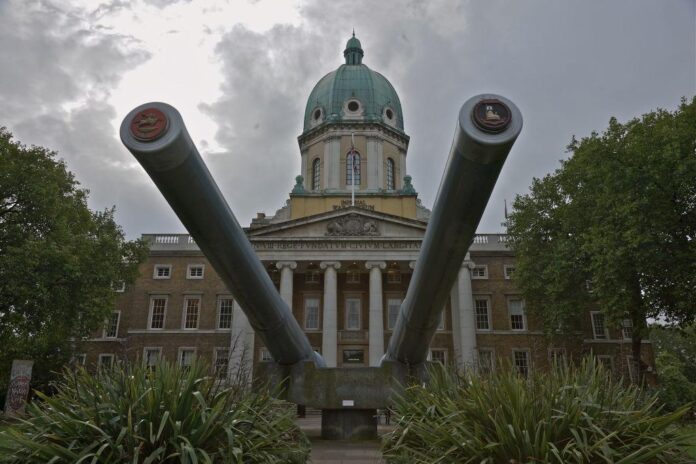After the shocking revelation this summer that more than 2,000 objects had been stolen from the British Museum, institutions across the U.K. are facing increased scrutiny in the news, with revelations that thousands of artifacts have been categorized as missing in the last five years.
In the wake of the British Museum scandal, the published a report claiming two of Britain’s most important museums—the Imperial War Museum and the Natural History Museum—“admitted” that more than 1,000 items of historical and scientific significance were missing.
The tabloid claimed that, in response to Freedom of Information requests filed by the reporter, 559 objects had been recorded as being lost from the Imperial War Museum since 2018. The Natural History Museum said more than 540 items had been misplaced, destroyed, or stolen.
The BBC then reported that Museum Wales data revealed that 1,921 items are missing from its collection.
However, museums are now contesting the characterization in the news that there is a broad pattern of art theft or that the institutions deserve increased scrutiny for the missing items.
Unrepresentative data
The Imperial War Museum directly challenged the characterization of its losses reported by thein an email. A spokesperson for the museum—which is comprised of five locations, three of which are in London—said that the data provided per the request cannot accurately be described as objects lost over the past five years.
“It is misleading to state that 559 objects have been lost over the past five years. The ‘dates recorded as lost’ in this data simply represent the date that loss records were last updated on our system, and bear little or no relation to the date of actual losses,” the spokesperson said.
The information was pulled from a collections management database started in 2007; it was only considered completed in 2017.
“In reality, the vast majority of these losses date from many years or even decades ago, long before our current collections management systems were put in place,” the spokesperson said. They also characterized the missing objects as “typically low-value, mass-produced items.” This includes 156 maps, 39 photographic negatives, 23 video tapes, and 38 posters.
“In most cases we still have duplicates or digitized versions,” they added.
Thefts and losses “are rare,” according to the spokesperson, because the museum has policies and systems to safeguard the 33.5 million items in its care including “regular audits and spot checks and restricted access” to its collection storage facilities.
“Police carry out a thorough investigation for every lost item and these investigations have never established any evidence of internal malicious activity,” they added.
Additionally, the museum’s Department of Collections Management, established in 2000, has identified ways to make improvements to its labeling and cataloging of items, the spokesperson said.
Comprehensive collection review
Museum Wales, also known as Amgueddfa Cymru, consists of seven institutions, including the National Museum Cardiff and St. Fagans National Museum of History in Cardiff. It has more than 5.3 million objects in its care but has recorded just 16 items taken from its sites since 2017. It also suggested that reporting the 1,921 figure of missing items as new thefts is misleading, and that the items were identified after a “comprehensive review” conducted last year.
“We have robust collections management procedures in place and continually review and improve these procedures on a regular basis,” Museum Wales said.
“However, whilst we have vigorous collection management and security procedures in place, due to the scale of the collection and with at least 1.3 million people visiting our seven museums per annum, some losses are unfortunately inevitable,” a spokesperson said.
Museum Wales said the 16 items that were lost since 2017 are mostly small, domestic items and that the 1,921 missing items from prior to 2017 are considered of low financial value such as agricultural or domestic items. They also include fragments related to excavations and replicas made for display.
“There are a number of coins missing from our collection including many which were transferred to the Schools Handling Collection from the 1950s onwards, when documentation was not as methodical as it is today,” the spokesperson said. “A significant proportion of these are duplicate items and we have better quality examples within our collection.”
Museum Wales noted that it reports all lost, stolen, or deaccessioned items to its board of trustees on a quarterly basis.
The Natural History Museum in London did not respond to request for comment or an information request by press time.
British Museum a unique case?
Despite the emphasis on the British Museum incident as a product of unique circumstances, the institution’s announcement garnered international attention and continues to prompt inquiries into other museums’ collections both in the U.K. and elsewhere.
The British Museum announced in a news release in August that it had fired an employee and begun legal action against that person for the missing, stolen, and damaged items.
As previously reported by Artnet News, the situation highlighted major flaws in the ways museums run their collections such as vulnerabilities with cataloguing, as well as a lack of transparency surrounding collections and accountability for items in their holdings.
“This is a highly unusual incident. I know I speak for all colleagues when I say that we take the safeguarding of all the items in our care extremely seriously. The Museum apologizes for what has happened, but we have now brought an end to this,” museum director Hartwig Fischer said in a statement at the time.
Fischer announced he would resign early, nine days after the scandal broke, and the fired employee was later identified as senior curator Peter John Higgs.
Though some objects were recovered shortly afterward, chairman George Osborne claimed the institution’s reputation had been damaged because of the thefts that occurred “over a long period of time,” according to a BBC report, which also cited another unnamed expert who called the losses “mind-blowing.”
More Trending Stories:

























